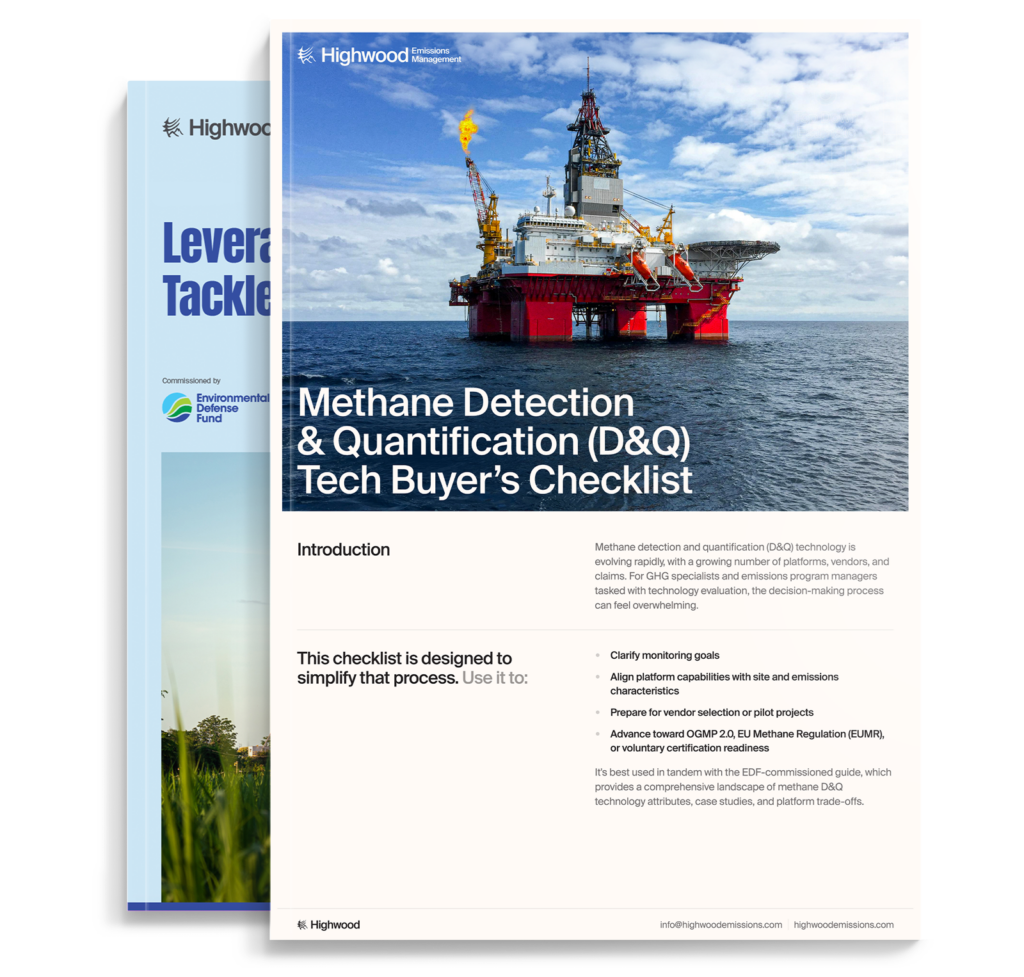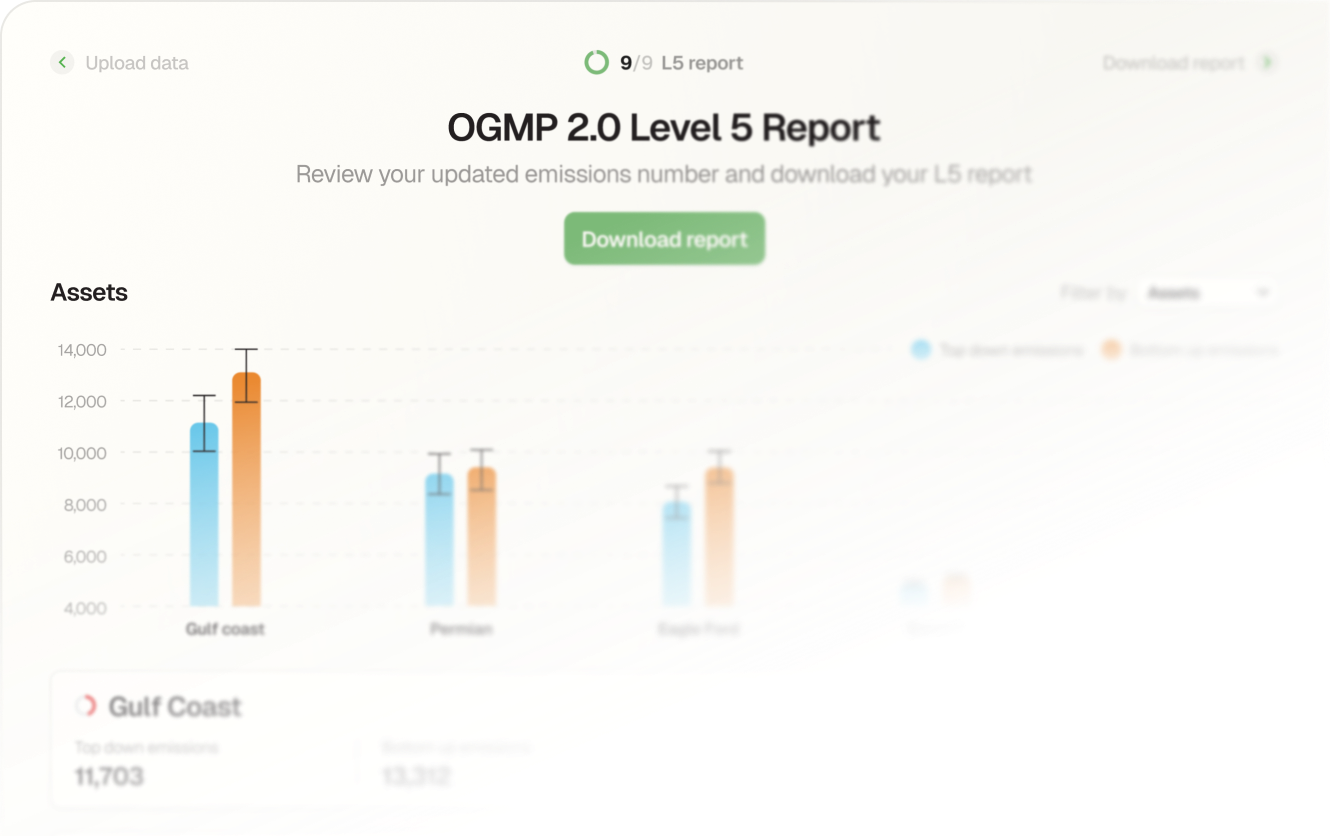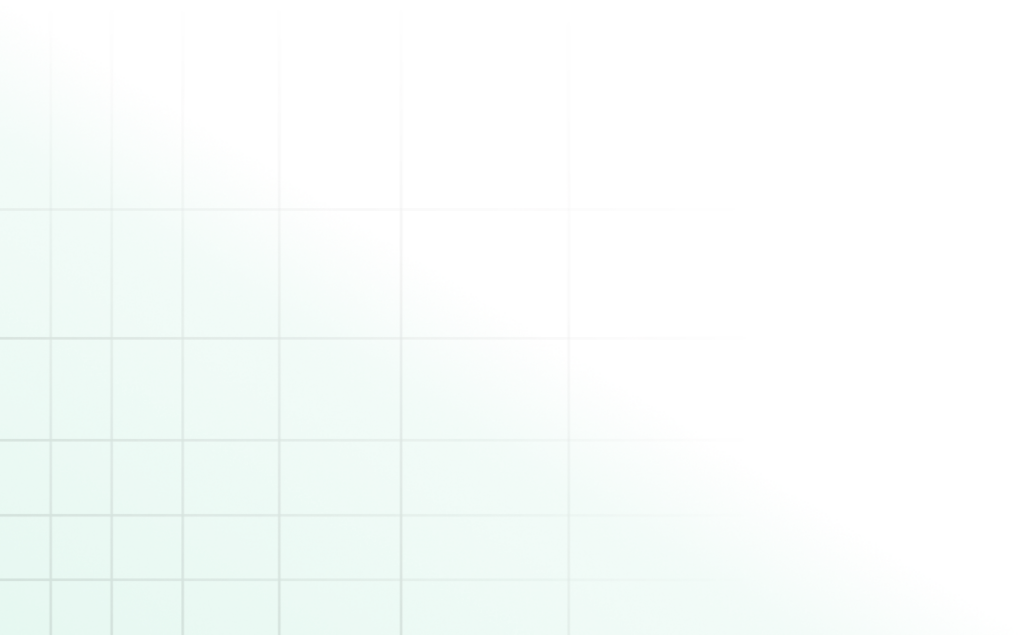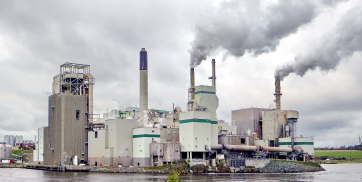- Resources
Methane detection & leak monitoring guide
Your guide to selecting the right tech stack to reduce emissions, meet OGMP 2.0 Level 5, and satisfy regulators — without getting buried in complexity.
Quick-answer summary
Methane detection and leak-monitoring is the process of locating, quantifying, and tracking methane emissions using technologies such as:
- Satellites
- Aerial surveys
- Optical gas-imaging (OGI) cameras
- Mobile LDAR simulations
- Continuous monitoring sensors
The right mix delivers faster leak repair, lower product loss, and audit-ready data for OGMP 2.0, EU MER, and EPA Super-Emitter rules.
- Methane guide
Download your tech buyer’s checklist
Not sure how to evaluate the right technology stack for your sites?
This practical checklist — designed to complement the Industry Guide — helps GHG leaders and emissions managers define goals, assess constraints, and prepare for smart vendor conversations.
Includes prompts to help clarify:
- Measurement goals (OGMP, EUMR, voluntary)
- Emission source complexity & data needs
- Platform tradeoffs and vendor readiness
- Budget, accuracy, and regulatory exposure
Used by clients at all stages of the measurement journey, from early exploration to Level 5 reporting.

Your download includes a bonus report:
Leveraging Technology to Tackle Methane Emissions
Detection vs quantification—why it matters
Detection
Locates leaks (> x kg/h) quickly; ideal for prioritising repairs.
Quantification
Measures emission rate; essential for OGMP 2.0 Level 5 and fee calculations.
Best practice
Use LDAR-Sim to optimize methane technology deployment by leveraging historical data and understanding site-specific nuances for maximum efficiency.
Key takeaway
Regulators and investors increasingly require both detection and defensible quantification—choosing the wrong stack can double verification time.
Achieve OGMP 2.0 Gold Standard — without the stress.
Simplify your measurement strategy, accelerate verification, and spend less time chasing data.
The Highwood Emissions Intelligence Platform helps GHG leaders get it right the first time.

Frequently asked questions
How important is methane in net-zero targets?
Methane is crucial for near-term climate action. Reducing methane emissions, especially for O&G producers, offers fast climate benefits and is often one of the most cost-effective steps toward meeting net-zero commitments.
Which oil and gas equipment account for most methane emissions?
Key sources include well pad equipment, compressors, storage tanks, unlit flares, and gas processing plants. A small number of large leaks from this equipment—so-called "super-emitters"—often dominate total emissions.
What is meant by source-level vs site-level data?
Generally, source-level emissions are broken down by component (e.g., tank vent, pneumatic valve). Site-level emissions can be a total emission for an entire facility, or simply top-down measurements at the equipment group scale. Source-level data supports diagnostics and mitigation; site-level supports inventory rollup, regulatory reporting, and identification of missing or unexpected sources.
What is materiality in emissions accounting?
Materiality refers to whether an emissions source is significant enough to meaningfully impact reported totals or decisions. Small or uncertain sources may be excluded if they fall below an established materiality threshold.
What technologies are available for detecting methane leaks?
Highwood tracks a database of over 200 commercial technologies, including handheld systems, drones, ground-based vehicles, aircraft, satellites, and continuous monitoring systems. Each offers trade-offs in sensitivity, coverage, and cost.
Can satellites detect methane emissions?
Yes. Modern satellites (e.g., GHGSat, TROPOMI, Carbon Mapper) can detect and quantify large methane plumes. They are most effective for super-emitter events and regional mapping and may miss small or intermittent leaks.
How do you determine a technology’s probability of detection?
This is assessed through controlled testing or field validation—measuring how often the tech detects leaks of known size and type under varying conditions.
How are AI and machine learning used in methane detection?
AI/ML can analyze enhance detection speed and accuracy, improve insights, and identify patterns, but still require robust training data. Reporting cannot be “black box” and AI has important limitations with respect to verifiability.
What role do flare efficiency and combustion performance play?
Poor flare efficiency means that unburned methane escapes during flaring. Ensuring high combustion efficiency is essential to achieve low methane intensity.
How do I know if my emissions data is credible?
Credibility depends on measurement quality, documentation, uncertainty analysis, and alignment with established protocols. Using third-party verification, reconciling estimates with measurements, and ensuring methodological transparency are key indicators.
What is third-party verification and how does it work?
Verification involves an independent auditor reviewing your emissions data, methods, and assumptions. The goal is to assess credibility and transparency. It’s often required for certification, regulatory compliance, or investor assurance.
What are the most common gaps in emissions data?
Typical gaps include missing activity data, unmeasured intermittent events, outdated emission factors, lack of uncertainty bounds, inconsistent monitoring, or unaccounted sources like episodic venting or combustion slip.
How often should I update my emissions inventory?
At a minimum, most companies update emissions inventories annually, aligning with most reporting frameworks and regulations. However, some companies opt for monthly or quarterly internal reporting.
How can oil and gas companies reduce their methane emissions?
Dozens of strategies exist, which include but are not limited to leak detection and repair (LDAR), replacing pneumatic devices, improving compressors, capturing vented gas, installing vapor recovery units, optimizing combustion, and deploying continuous monitoring or other technologies.
How can I reduce emissions during routine maintenance?
Options include using temporary capture systems, reducing blowdowns, routing gas to flare or recovery units, and timing maintenance during low-pressure periods. Planning and equipment upgrades can minimize emissions from scheduled operations.
What is the cost per tonne to reduce methane emissions?
Costs are typically measured in dollars per tonne of CO₂-equivalent reduced. Many methane mitigation measures have low or even negative costs, meaning the value of the captured gas can offset or exceed program expenses.
How should I prioritize emission reduction opportunities?
Rank by emission magnitude, mitigation cost-effectiveness, regulatory exposure, and reputational or commercial risk. Tools like marginal abatement cost curves and scenario models (e.g., LDAR-Sim) help guide decisions.
What is the typical timeline to build a MII?
Timelines range from several months to years, depending on data availability, measurement needs, and organizational complexity. Early planning and internal alignment accelerate the process. Highwood often helps deliver MIIs ahead of deadlines.
Where can I get training in methane emissions management?
Highwood offers online courses via SAGA Wisdom and live custom sessions covering methane fundamentals, regulations (OGMP, MiQ, EPA), technology, mitigation, and inventory best practices—for both technical and leadership teams.


- Get started

